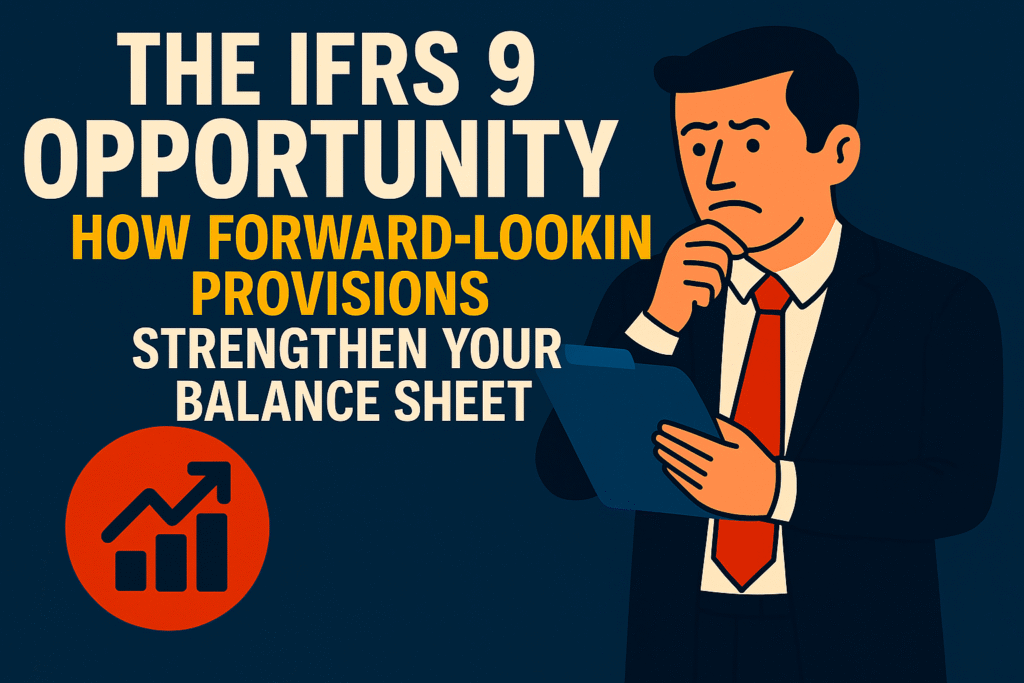The IFRS 9 Opportunity: How Forward-Looking Provisions Strengthen Your Balance Sheet

A retail bank just took a $15 million hit to their profits. Not from loans going bad—but from realizing they’d been calculating their provisions wrong since IFRS 9 started. The scariest part? They thought they were being conservative.
The Forward-Looking Trap
Under the old rules (IAS 39), you waited for something bad to happen before recording losses. IFRS 9 flipped this completely—now you must predict future losses from day one.
Here’s what trips everyone up: “12-month expected credit losses” doesn’t mean losses expected in the next 12 months. It means the losses from defaults expected in the next 12 months, even if the cash impact comes later.
Mind-bending example: You have a 5-year loan. The chance of default in year 1 is 2%. If they default, you lose $100,000. Your 12-month ECL isn’t zero—it’s $2,000 from day one!
The Three-Stage Nightmare
IFRS 9 requires tracking every loan through three stages:
- Stage 1: Performing (12-month ECL)
- Stage 2: Significantly deteriorated (lifetime ECL)
- Stage 3: Credit-impaired (lifetime ECL)
The killer question: What’s “significant deterioration”?
One company thought it meant 90 days overdue. Their auditors disagreed. Turns out, a customer’s credit score dropping, industry downturn, or even divorce could trigger Stage 2. Suddenly, their provisions tripled.
The COVID Curveball
Remember 2020? Companies discovered their models didn’t work when the entire economy shut down. Those using only historical data got burned. IFRS 9 demands forward-looking information—economic forecasts, industry trends, even climate change impacts.
Real disaster: A car financing company used 5-year historical default rates. Worked great until used car prices crashed 30%. Their “conservative” 2% provision should have been 8%. Shareholders were not pleased.
The Simplification Trap
Think trade receivables are easier? Think again. Even the “simplified approach” requires lifetime ECL from day one. That 30-day payment term customer? You need to estimate losses even on day 1.
Your Takeaway as an Accountant
Build a proper ECL model—don’t rely on rules of thumb. Document every assumption, especially your definition of “significant increase in credit risk.” Update for forward-looking info quarterly, not annually. Most importantly, stress-test your model. Ask: “What if we’re wrong by 50%?”
Remember: IFRS 9 isn’t about being optimistic or pessimistic—it’s about being realistic. And reality can change fast.
Navigate complex standards with confidence at ACCOUNTANT MINDSET—where we prepare for tomorrow’s challenges today.

